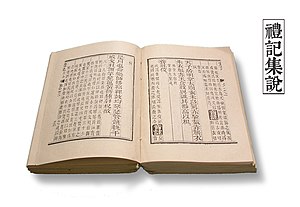Introduction (writing): Difference between revisions
mNo edit summary |
m Split new sentence. |
||
| Line 11: | Line 11: | ||
Keeping the concept of the introduction the same, different documents have different styles to introduce the written text. For example, the introduction of a Functional Specification consists of information that the whole document is yet to explain. If a Userguide is written, the introduction is about the product. In a report, the introduction gives a summary of the report's contents. |
Keeping the concept of the introduction the same, different documents have different styles to introduce the written text. For example, the introduction of a Functional Specification consists of information that the whole document is yet to explain. If a Userguide is written, the introduction is about the product. In a report, the introduction gives a summary of the report's contents. |
||
Not all introductions are alike, and not all of them include summaries. For example, the ''[[American Journal of Physics]]'' specifically advises authors that an introduction “need not summarize”. Instead, the introduction can provide “background and context”, and/or indicate “purpose and importance”, and/or describe the raison d'être for an article (i.e. motivation) in a way that is “informative and inviting” |
Not all introductions are alike, and not all of them include summaries. For example, the ''[[American Journal of Physics]]'' specifically advises authors that an introduction “need not summarize”. Instead, the introduction can provide “background and context”, and/or indicate “purpose and importance”, and/or describe the raison d'être for an article (i.e. motivation) in a way that is “informative and inviting”. But the introduction need not summarize or even state the main points of the rest of an article.<ref>[https://www.aapt.org/Publications/AJP/Contributors/Formatting_the_manuscript.cfm “For Contributors - Formatting the Manuscript”], [[American Journal of Physics]]. Retrieved 28 Jul 2022.</ref> |
||
== See also == |
== See also == |
||
Revision as of 07:37, 28 July 2022
This article needs additional citations for verification. (February 2020) |

In an essay, article, or book, an introduction (also known as a prolegomenon) is a beginning section which states the purpose and goals of the following writing. This is generally followed by the body and conclusion.
The introduction typically describes the scope of the document and gives a brief explanation or summary of the document. It may also explain certain elements that are important to the essay. The readers can have an idea about the following text before they actually start reading it.
In a book of technical writing, the introduction may include one or more standard subsections: abstract or summary, preface, acknowledgments, and foreword. Alternatively, the section labeled introduction itself may be a brief section found along with abstract, foreword, etc. (rather than containing them). In this case, the set of sections that come before the body of the book is known as the front matter. When the book is divided into numbered chapters, by convention the introduction and any other front-matter sections are unnumbered and precede chapter 1.
Keeping the concept of the introduction the same, different documents have different styles to introduce the written text. For example, the introduction of a Functional Specification consists of information that the whole document is yet to explain. If a Userguide is written, the introduction is about the product. In a report, the introduction gives a summary of the report's contents.
Not all introductions are alike, and not all of them include summaries. For example, the American Journal of Physics specifically advises authors that an introduction “need not summarize”. Instead, the introduction can provide “background and context”, and/or indicate “purpose and importance”, and/or describe the raison d'être for an article (i.e. motivation) in a way that is “informative and inviting”. But the introduction need not summarize or even state the main points of the rest of an article.[1]
See also
References
- ^ “For Contributors - Formatting the Manuscript”, American Journal of Physics. Retrieved 28 Jul 2022.
- Leora Freedman; Jerry Plotnick. "Introductions and Conclusions". University of Toronto.

